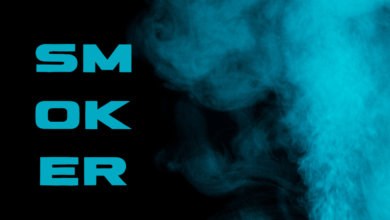Tobacco: Exploring the Risks, Impacts, and Re gulations

Tobacco has been a part of human culture and consumption for centuries, with the first recorded use of tobacco dating back to the 16th century. In the modern world, it remains an important part of many cultures and a source of economic stability in some countries. However, it is also associated with a variety of risks and dangers to human health and the environment. This paper seeks to explore the potential health risks, environmental impacts, economic effects, and regulations surrounding the production and consumption of tobacco products.
Introduction to Tobacco and its History
Tobacco has had a long and storied history, with its first recorded use dating back to the 16th century. Over the centuries, it has been widely used in various forms and for various purposes, from religious ceremonies to recreational use. Its prevalence in many cultures has made it a significant economic force, with many countries relying heavily on the production and consumption of tobacco for economic stability. Despite its long history, its risks to human health and the environment have been heavily documented over the past few decades, leading to various regulations and restrictions on its production and consumption.
Potential Health Risks Associated with Smoking Tobacco
The primary risk associated with smoking tobacco is that of lung cancer. According to the World Health Organization, tobacco smoking is the leading cause of preventable death in the world, with more than seven million people dying annually from smoking-related illnesses. In addition, smoking tobacco has also been linked to a variety of other cancers, respiratory and cardiovascular diseases, and other health problems.
Dangers of Second-hand Smoke
In addition to the risks posed to smokers, second-hand smoke has also been linked to a variety of health issues, particularly in children. According to the Centers for Disease Control and Prevention, second-hand smoke has been linked to lung cancer, respiratory infections, and asthma attacks in children. As such, it is important for smokers to take precautions to protect those around them from second-hand smoke.
Different Types of Tobacco Products
Tobacco is available in a variety of forms, from cigarettes to cigars to smokeless tobacco. Each of these products has its own set of risks and potential health effects. For example, cigarettes contain more nicotine and are generally considered to be the most dangerous form of tobacco, while cigars contain fewer chemicals and may have fewer health risks. Smokeless tobacco, meanwhile, is generally considered to be less dangerous than cigarettes or cigars but still carries potential health risks.
Tobacco’s Impact on the Environment
The production and consumption of tobacco products also have an impact on the environment. The burning of tobacco products releases a variety of chemicals into the atmosphere, including carbon dioxide and other greenhouse gases that are linked to climate change. In addition, the production of tobacco products requires the use of large amounts of pesticides and other chemicals, which can have detrimental effects on the local environment.
Economic Effects of Tobacco Production and Consumption
Tobacco production and consumption can also have significant economic impacts. The production of tobacco products requires the use of large amounts of resources and labor, which can have an economic benefit for countries that rely heavily on tobacco production. However, the economic benefits of tobacco production can be offset by the costs associated with the health problems and environmental damage caused by the consumption of tobacco products.
Tobacco Advertising and Marketing Tactics
The marketing of tobacco products has been a controversial issue for many years. Tobacco companies have often used a variety of tactics to advertise their products, such as targeting young people and using deceptive language to downplay the risks associated with smoking. These tactics have been heavily criticized by public health advocates, leading to various regulations and restrictions on tobacco advertising.
Government Regulations on Tobacco
In recent years, governments around the world have enacted various regulations and restrictions on the production and consumption of tobacco products. These regulations range from restrictions on advertising and marketing to taxes and bans on certain products. In addition, many governments have also implemented programs to help people quit smoking and reduce the overall consumption of tobacco products.
Benefits of Quitting Tobacco
Quitting tobacco can have a variety of health benefits, including reducing the risk of cancer and other smoking-related illnesses. In addition, quitting can also reduce the risk of secondhand smoke exposure, leading to improved health for those around you. In addition, quitting can also lead to economic benefits, as the cost of smoking can add up over time.
Conclusion
In conclusion, tobacco has been a part of human culture for centuries and remains an important part of many cultures. However, it is also associated with a variety of risks and dangers to human health and the environment. This paper has explored the potential health risks, environmental impacts, economic effects, and regulations surrounding the production and consumption of tobacco products, and discussed the potential benefits of quitting tobacco.





